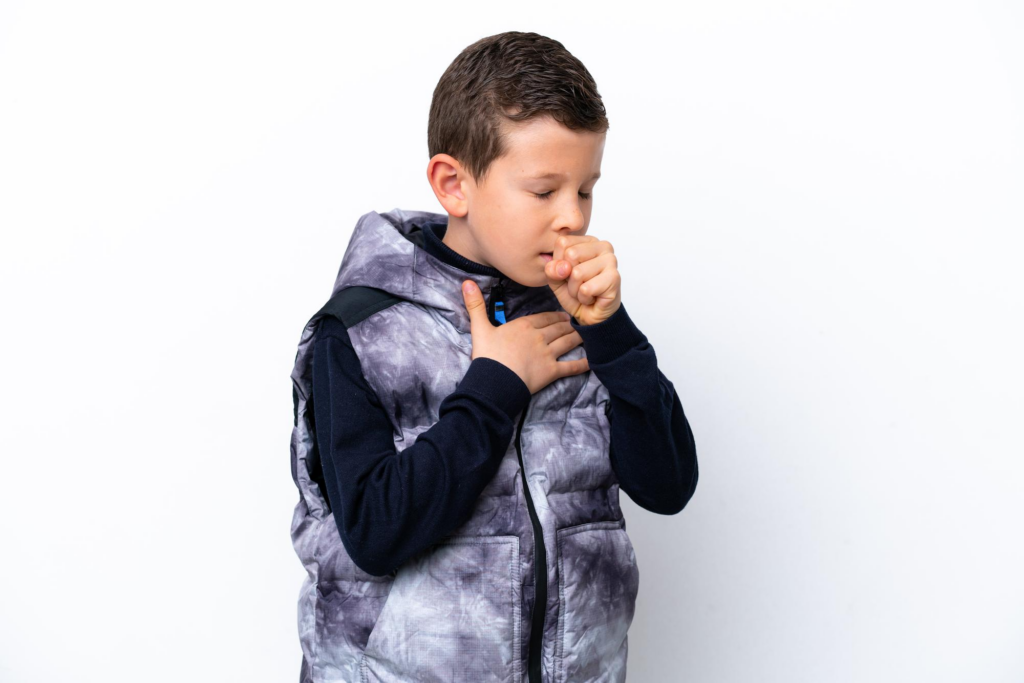Bronchitis can be troubling, especially for kids. Knowing the early signs helps prevent complications. Parents aim to prevent bronchitis in kids by giving them the best care. A guide to understanding, spotting, and taking action against bronchitis can pave the way for healthier children.
Understanding Bronchitis in Children: A Brief Overview
Bronchitis happens when the airways in your child’s lungs get inflamed. It comes in two forms: acute bronchitis, which is short-term, and chronic bronchitis, which lasts longer. For children, bronchitis impacts their ability to breathe easily. Their smaller lungs find it harder to push air through swollen airways. Early detection and efforts to prevent bronchitis in kids matter immensely. Recognizing symptoms quickly can lead to swift action, possibly keeping the ailment from worsening. By understanding bronchitis, parents can decisively step in to support their child’s health, ensuring a happier, healthier recovery process.
Identifying Early Symptoms of Bronchitis
Coughing and wheezing are some early signals. Persistent coughs and slight wheezing may happen day or night. Children might seem more tired than expected, and fevers can occasionally tag along. Noticing these symptoms quickly can differentiate bronchitis from common cold or flu, especially when they linger longer. Real-life stories help clarify: One mom noticed her daughter’s cough didn’t go away. Upon visiting a doctor, it turned out to be bronchitis. Spotting signs early can make a big difference, ensuring kids get the right care sooner rather than later.
Dispelling Common Misconceptions About Bronchitis
Some think bronchitis is just a bad cough. It’s important to understand bronchitis is more than that. Over-the-counter medicine might just mask symptoms instead of treating the root cause. Knowing these truths helps parents look out for proper solutions. In doing so, they can prevent bronchitis in kids, ensuring quicker recovery and fewer worries.
Environmental and Lifestyle Triggers
Air pollution is a big trigger, especially in places like India. Poor air quality can worsen symptoms of bronchitis. Indoors, clean air matters too. Keeping the home’s air fresh and free from allergens helps immensely. Parents can use air purifiers or keep windows open for ventilation. Smoking around kids multiplies risks significantly. It’s vital to avoid smoking inside the home to prevent harming the child’s lungs. By recognizing these environmental factors, parents can take active steps to ensure a healthier living space, helping to prevent bronchitis in kids.
Steps for Parents to Prevent Bronchitis
Here are some ways for parents to help: – Encourage exercise: Kids need movement to keep lungs healthy. – Ensure proper hydration: Fluids help thin mucus, easing symptoms. – Promote hygiene: Frequent handwashing and cleanliness reduce infection risks.
Taking these preventive steps can support efforts to prevent bronchitis in kids, building their body’s defenses against it.
The Role of Nutrition in Strengthening Children’s Immune Systems
The right foods can boost kids’ defenses. Fruits like oranges and apples, green veggies, and lean meats are all beneficial. They come packed with vitamins and nutrients supporting strong immune systems. A balanced meal plan with all these goodies keeps children’s bodies even healthier. For respiratory health, omega-3 fatty acids, found in fish, play a crucial role. Knowing these dietary details greatly helps families work towards preventing bronchitis in kids, keeping colds and other ailments at bay.
Exploring Natural and Herbal Remedies
Several herbs support kids’ breathing health, like ginger and turmeric, known for their soothing effects. Aromatherapy, using lavender or eucalyptus oils, relaxes airways. Simple breathing exercises taught to children can greatly assist in clear breathing. In India, practices like steam inhalation offer relief and assist in easing bronchial discomfort. By integrating these gentle remedies, parents can contribute to reducing bronchitis risk in their kids, while embracing traditional practices known to be effective.
Recognizing When to Consult a Healthcare Professional
Understanding when to get professional help is crucial. If symptoms persist after a few days or worsen, it’s time to see a doctor. A typical diagnosis might involve checking lungs and breathing, leading to treatment options like medication to reduce inflammation. Seeking medical advice can greatly assist in catching issues early, aiding to prevent worsening bronchitis symptoms in kids.
The Role of Vaccinations in Respiratory Health
Vaccines greatly protect against coughing illnesses. Essential vaccinations protect against bronchitis causes. Ensuring kids are up-to-date on their shots guards against various respiratory problems. Timely vaccinations, according to school-age schedules, help in not only protecting the child but also the entire community, lessening the chance of preventing bronchitis in other kids too.
The Importance of a Collaborative Approach
Parents should team up with teachers and doctors to ensure comprehensive care. Schools can help by keeping learning spaces clean and encouraging healthy habits. Collaboration ensures consistency, making preventive steps more effective. When everyone plays their part, emergent signs are noticed faster, aiding in preventing bronchitis from taking hold and spreading amongst children.
Conclusion: A Balanced Approach
Combining current medicine with old, trusted methods ensures well-rounded care. Keeping a lookout for symptoms, maintaining a healthy lifestyle, and embracing nutrients boost children’s overall wellness. Wrapping these practices together makes it possible to safely prevent bronchitis in kids. Parents should always aim for a harmonious blend tailored to their children’s needs, ensuring bright, healthy futures for their young ones.

